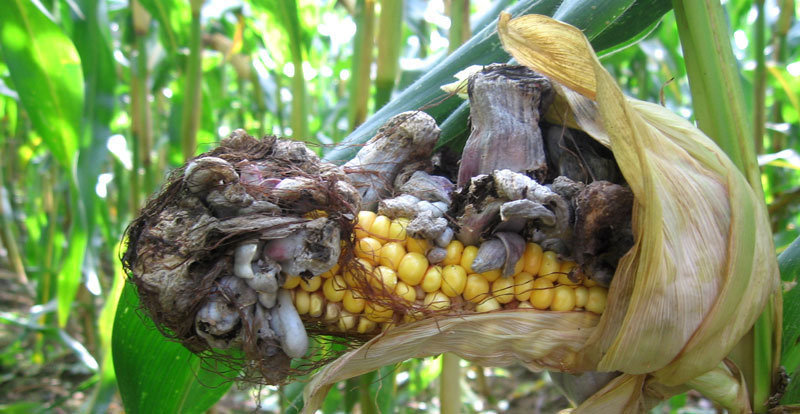
Key facts on the impact of fungal infestations on global food security
Fungal diseases are likely to occur more frequently in cultivated plants due to climate change
Fungi are the leading cause of crop diseases and the resulting crop failures. Several hundred different fungal diseases of cultivated plants are known. These fungi destroy between 20 and 40 percent of the global annual harvest. The amount of food lost to fungal infections could feed between 600 million and four billion people each year.
What makes fungal diseases so dangerous?
Fungi produce millions of microscopic spores that can be spread over long distances. The spores are very resistant and can, in some cases, remain viable for up to 40 years.
Some fungi produce spores are carried by the wind to heights of several kilometres and thus travel thousands of kilometres’ – sometimes across continents.
The individual fungal species differ greatly from each other genetically. Even within a species, the individuals are often genetically very variable. In addition, they can exchange genetic material among themselves. In rare instances, fungi exchanged genetic material even with bacteria and plants. This enables fungi to adapt quickly and, for example, to become resistant to anti-fungal agents – so-called fungicides.
What circumstances favour fungal diseases?
The increasing use of fungicides with a single mechanism of action promotes the development of resistance.
In large fields with monocultures of genetically identical crops, fungi can cause enormous crop damage.
How does the climate crisis affect fungal diseases in crops?
Since fungi generally benefit from higher temperatures, it is to be expected that fungal diseases will also increase in the future.
Thanks to rising temperatures, fungi from the tropics can penetrate into more temperate latitudes. Since 1990, fungal diseases in plants have spread seven kilometres northward every year. Stem rust of wheat, which originates in the tropics, has now spread as far as England and Ireland.
If the molecular processes in plants change due to climate change, harmless fungi can turn into pathogenic ones.
How do farmers combat these diseases?
Usage of fungicides with a single mechanism of action
Breeding resistant plants based on a single resistance gene
Clearing of fields
What else can be done to prevent crop failures?
In fields where different species or varieties with different resistance genes are grown, pathogens cannot spread quickly over large areas.
With the help of satellites, drones, artificial intelligence and incentives for farmers to report fungal infestations, the occurrence and spread of fungal diseases can be detected early and countermeasures initiated.
More attention for the International Plant Protection Convention, which 180 countries have signed
What options are currently being researched?
Fungicides that disrupt several cellular processes at the same time, making it more difficult for pathogens to become resistant to the agents
Genome-edited resistant plants with one or more resistance genes and pattern recognition receptors for fungal molecules
Natural inhibitors such as polyoxins or antagonists such as the fungus Trichoderma
Artificial microbial communities that strengthen the growth and resistance of plants
RNA molecules that inhibit vital fungal processes (RNA interference)
Intelligent mixing of crops to increase genetic diversity in the field.











